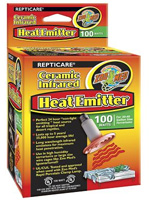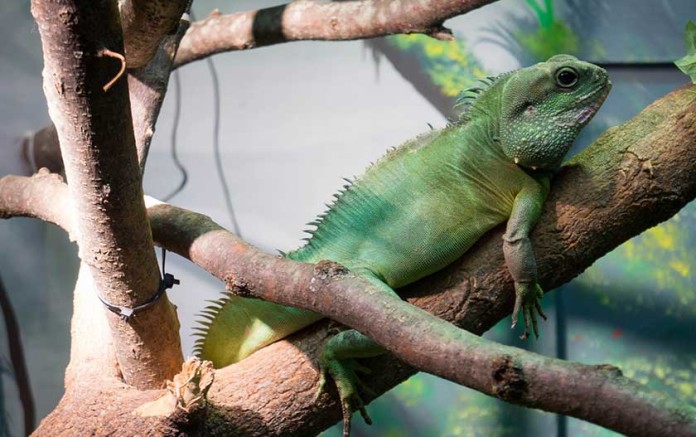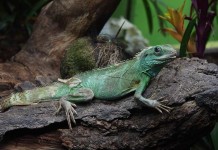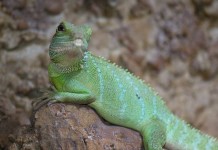Chinese water dragons live in a tropical climate therefore warm conditions are ideal for them. You can consider having bulbs and heat lamps to provide the ideal temperature requirements. Your pet is native to tropical rain forests where the temperature normally ranges around 70 to 85 degrees Fahrenheit all year round. This means that your pet needs to kept warm in the captive environment to stay happy and healthy.
It is a good idea to place thermometers inside the enclosure to monitor the temperature closely. Ideally, water dragons need to be kept between 84 and 88 degrees Fahrenheit during the day. Temperature readings at night ideally should be in the range of 75 and 80 degrees Fahrenheit. You can place a couple of thermometers inside the tank to get a better idea of the temperature readings.
One thermometer can be placed near the heat source to prevent the cage from getting too warm. The other thermometer can be kept in a cooler area to prevent the temperature from dropping down. It is crucial that you don’t allow the temperature to fall too low as it can make your dragon sick.
When kept at lower temperatures, water dragons are more likely to get infected with respiratory illness. If the temperature reduces further, it can cause the immune system of your pet to get weak. Your pet may not be able to digest food as its metabolism gets really slow at lower temperature.
 In order to maintain the ideal temperature, you can use bulbs or heat lamps with different wattages. There are no definite rules for the size of bulb you need to use. It actually depends on the temperature of the area or room you use to keep the dragon’s enclosure. If your home is warm, your pet will probably do well with a low wattage bulb.
In order to maintain the ideal temperature, you can use bulbs or heat lamps with different wattages. There are no definite rules for the size of bulb you need to use. It actually depends on the temperature of the area or room you use to keep the dragon’s enclosure. If your home is warm, your pet will probably do well with a low wattage bulb.
On the other hand, if you live in cooler region, you will have to use bulbs with higher wattages to maintain the ideal temperature. Most dragon owners have problems in maintaining enclosure temperature when the season changes. If the tank gets too hot in the hotter months, you should use bulbs with low wattages. You can provide additional insulation to keep the tank warm during the winter.
You should also set the heat bulbs on a timer, as you need to maintain the amount of light your pet receives everyday.










